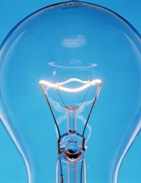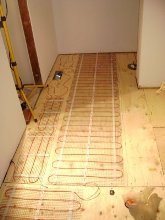What is the maximum allowable wire current rating and allowable power dissipation
 When electric current passes through the wire, the electrical energy is converted into heat. The speed of the process of converting electrical energy into heat is characterized by power P = user interface.
When electric current passes through the wire, the electrical energy is converted into heat. The speed of the process of converting electrical energy into heat is characterized by power P = user interface.
The amount of heat generated by the current in the wire, proportional to the square of the current, the resistance of the conductor and the time of passage of the current: Q = Az2rt (The Joule-Lenz law).
 The conversion of electrical energy into thermal energy is of great practical importance in the creation of incandescent lamps, heating devices and electric furnaces. The release of heat in wires and windings of electrical, machines, transformers, measuring and other devices is not only a useless waste of electrical energy, but also a process that can lead to an unacceptably high temperature rise and damage to the insulation of wires and even themselves devices.
The conversion of electrical energy into thermal energy is of great practical importance in the creation of incandescent lamps, heating devices and electric furnaces. The release of heat in wires and windings of electrical, machines, transformers, measuring and other devices is not only a useless waste of electrical energy, but also a process that can lead to an unacceptably high temperature rise and damage to the insulation of wires and even themselves devices.
The amount of heat generated in the conductor is proportional to the volume of the conductor and the temperature rise, and the rate of heat transfer to the surroundings is proportional to the temperature difference between the conductor and the surroundings.
The first time after switching on the circuit, the temperature difference between the wire and the environment is small. Only a small part of the heat generated by the current dissipates into the environment, and most of the heat remains in the wire and goes to its heating. This explains the rapid rise in the temperature of the wire in the initial stage of heating.
 As the temperature of the wire increases, the temperature difference between the wire and the environment increases, and the amount of heat released by the wire increases. In this regard, the temperature rise of the wires slows down more and more. Finally, at a certain temperature, the diesel locomotive is in equilibrium: for the same time, the amount released in the heat conductor becomes equal to the dissipation in the external environment.
As the temperature of the wire increases, the temperature difference between the wire and the environment increases, and the amount of heat released by the wire increases. In this regard, the temperature rise of the wires slows down more and more. Finally, at a certain temperature, the diesel locomotive is in equilibrium: for the same time, the amount released in the heat conductor becomes equal to the dissipation in the external environment.
With the further passage of direct current, the temperature of the wire does not change and is called a steady state temperature.
The time to heat up to a steady temperature is not the same for different wires: thread incandescent lamps heats up in a split second, electric car — after a few hours (as the analysis shows, theoretically the heating time is infinitely long, we will understand the heating time as the time during which the wire is heated to a temperature that is no more than 1% of the established one).
Heating of insulated wires must not be allowed above a certain limit, because the insulation can catch fire or even ignite in case of severe overheating, overheating of bare wires leads to a change in mechanical properties (conductor voltage).
 For insulated wires, the norms specify the maximum heating temperature 55 — 100 ° C, depending on the properties of the insulation and the installation conditions. The current at which the steady-state temperature meets the standards is called the maximum allowable or rated current of the conductor. The value of the nominal currents for different cross-sections of wires is given in the special tables in PUE and electrical reference books.
For insulated wires, the norms specify the maximum heating temperature 55 — 100 ° C, depending on the properties of the insulation and the installation conditions. The current at which the steady-state temperature meets the standards is called the maximum allowable or rated current of the conductor. The value of the nominal currents for different cross-sections of wires is given in the special tables in PUE and electrical reference books.
The power developed by the current in the conductor at which thermal equilibrium occurs and the permissible temperature is established is called the permissible power dissipation.
If more than the rated current flows through the wire, then the wire is "overloaded". However, since the steady-state temperature is not immediately reached, it is possible for a short time to let the current in the circuit exceed the nominal one (until the conductor temperature reaches the limit value). Excessive wire temperature usually occurs when short circuit.
